Introduction to Sempervivum Tectorum
Welcome to a world where resilience meets beauty: the intriguing realm of Sempervivum tectorum. Often referred to by its nicknames, such as ‘houseleeks’ or ‘hens and chicks’, this plant is a true natural masterpiece. Steeped in history and bursting with character, Sempervivum tectorum brings an undeniable allure to gardens and rockeries far and wide.
Originating from the rugged mountains of Europe, these succulent perennials have charmed their way into the hearts of gardening enthusiasts and landscape designers alike. Their ability to thrive in conditions that would leave lesser plants withering has turned them into a symbol of steadfastness and fortitude. But what truly sets them apart in the plant kingdom is their almost mystical appeal, coupled with a remarkable versatility that offers much more than mere aesthetics.
Imagine dense rosettes of thick, fleshy leaves, often tinged with captivating colors, resiliently clustering on rooftops or stoically perched on rocky ledges. It’s no wonder they’ve become such a sought-after element for those looking to inject rugged beauty into their green spaces.
There’s a reason behind their fame: not only do they demand minimal care, but they offer a kaleidoscope of shapes and hues that can transform the simplest of gardens into a textured tapestry worthy of admiration. And let’s not forget their ecological value, providing a haven for wildlife and an example of water-wise plant choices for the eco-conscious gardener.
Engage with the story of Sempervivum tectorum, and let’s delve into the enigmatic world of these charming survivors. They have more to offer than meets the eye, and unlocking their secrets is a journey well worth taking for any plant aficionado.
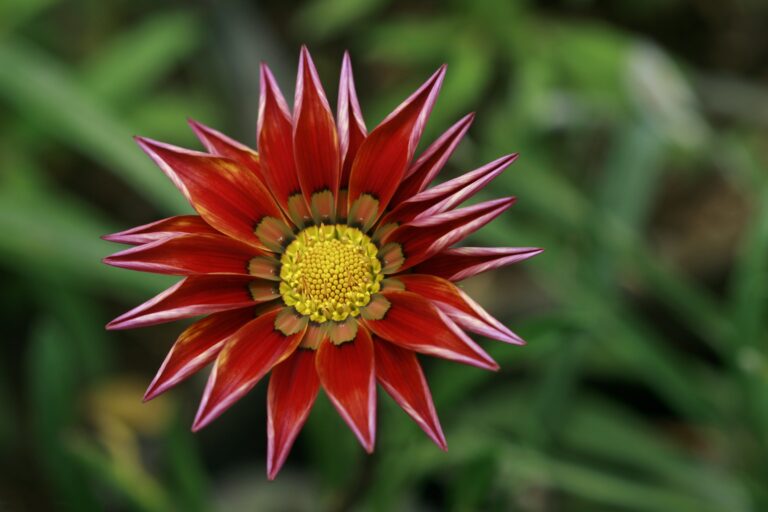
The Botanical Profile of Houseleeks
What’s unique about the unassuming Sempervivum tectorum is not just its tongue-twister of a name; it’s the intriguing blend of resilience and delicacy that this botanical enigma brings to the table—or, more fittingly, to the rocky slopes where it thrives. We’re diving into the botanical underpinnings of this tenacious succulent, affectionately known as the houseleek.
Starting from the roots, so to speak, Sempervivum tectorum hails from the Crassulaceae family. This scientific classification encompasses a group of plants commonly celebrated for their ability to stash water within their fleshy leaves—an attribute that has enabled the houseleek to persist through droughts that would wither lesser flora.
Now, envision the structure of these plucky plants: rosettes bundled tightly, as if guarding secrets within their spiraled leaves. Their hues—a cocktail of greens, purples, and even silvery frost—give the impression of a plant forged by the hands of a meticulous artist.
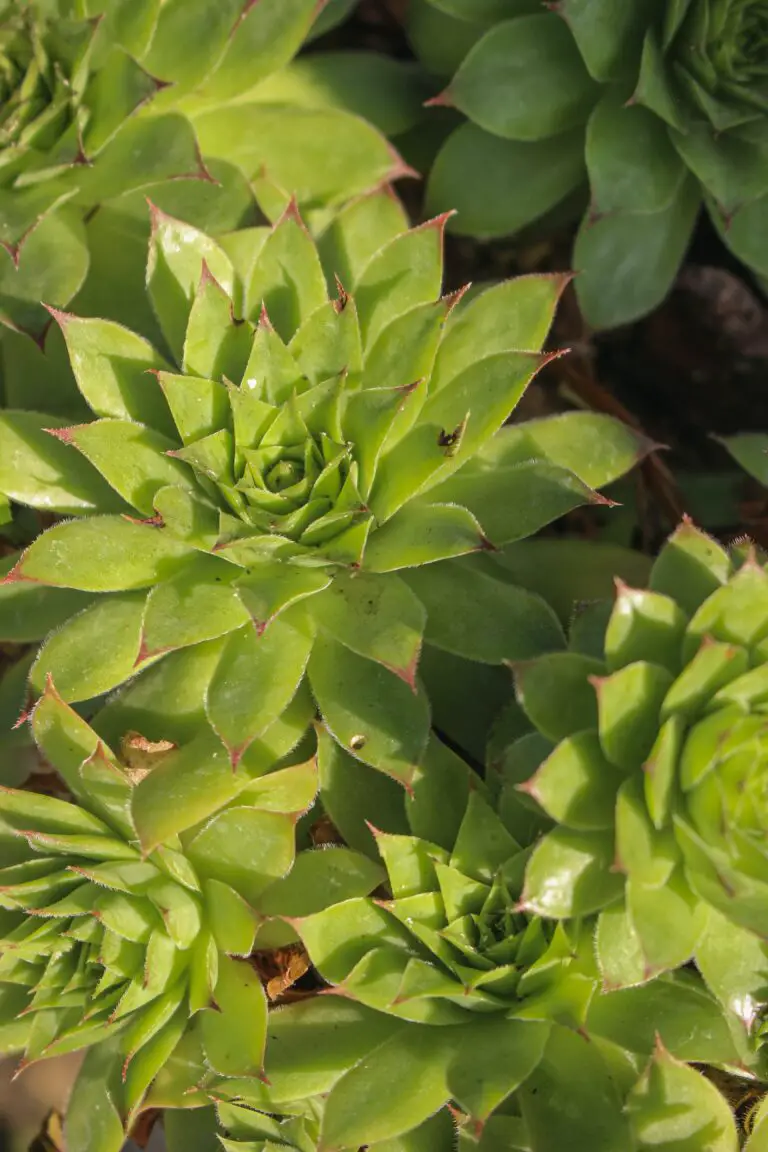
The growth patterns of the Sempervivum tectorum are as fascinating as their looks. Consider how they propagate; not solely content with the typical play of seeds and soil, these houseleeks send out “pups,” creating a delightful domino effect of baby rosettes sprouting from the mother plant. It’s a built-in survival strategy that earns them praise from gardeners and biologists alike.
Adaptation is the game, and houseleeks are the master players. Their leaves are not only succulent but come equipped with a powdery coating that reflects sunlight, reducing water loss in the sweltering sun. In the wild, they colonize inhospitable locales, from rocky outcrops to rooftop crevices, hence the nickname “roof iris” for their ability to live where few others dare to set root.
Within the garden, these characteristics transform Sempervivum tectorum into an easy-care oddity, bringing their adaptive fortitude and striking profiles to cultivated spaces. So next time you spot this botanical wonder, tip your hat to nature’s savvy survivalist, gracing our world with a touch of green tenacity and a whisper of mystery.
Cultivation Essentials: Sunlight, Soil, and Watering
Embarking upon the horticultural journey of nurturing Sempervivum Tectorum, commonly known as houseleeks, is akin to unraveling the secrets of a botanical enigma. This perennial trooper, rosette-shaped and hardy, craves conditions that mimic its native alpine habitats. Let’s delve into the quintessential triad for houseleek success: sunlight, soil, and watering.
Sunlight: Houseleeks bask in the glory of full sunlight, their succulent leaves soaking up the rays to foster vibrant colors and robust health. Imagine these resilient plants perched atop rocky outcrops, nonchalantly embracing the sun’s blaze. In your garden or balcony, Sempervivum Tectorum seeks a spot where daylight generously unfurls, ensuring their survival and efflorescence.
Soil: The Foundation of Vitality
The ideal soil for these stoic vegetal wonders is one that promotes excellent drainage, akin to the gravelly beds greeting them in the wild. Crafting a haven of mixed coarse sand, perlite, and compost creates an environment where roots are free to breathe and excessive moisture is averted—an imperative for preventing rot. For insightful guidance on optimal soil blends for succulents, dive into succulent soil tips.
Watering: A Delicate Balance
Watering demands a measured hand, as houseleeks have evolved to subsist on the sparse offerings of rainfall in their native crags. Envision mist caressing the leaves, and emulate this ephemeral touch—rare yet sufficient. A regimented routine of thorough watering followed by a drying interlude mirrors their preferred cadence. Overzealousness in hydration spells peril for these drought-adapted rosettes.
When it comes to ensuring the flourishing of your Sempervivum Tectorum, visualizing its natural setting isn’t merely an exercise in daydreaming; it’s fundamental to recreating appropriate conditions. By mastering the trifecta of sunlight, soil, and watering, you become the architect of a miniaturized alpine sanctuary, right in your own space. For those embarking on their succulent stewardship, peruse a complete guide to succulent care for a broader understanding of these fascinating plants.
${embed_code_with_alt}
Designing with Sempervivum: Landscaping Ideas
Picture this: a garden that survives and thrives in just about any condition, a troupe of hardy plants that form a textured, living tapestry across your outdoor space. Enter Sempervivum tectorum, the ever-versatile houseleek, ready to transform your garden into a spectacle of resilience and beauty.
Rock Gardens: A Stone’s Best Friend
Rock gardens crave the company of plants that complement their rugged charm, and Sempervivum fits the bill perfectly. With their rosette patterns, these succulents nestle into the nooks and crannies between stones, bringing life to areas that might otherwise be overlooked. Imagine the vibrant greens and reds of Sempervivum poking through a labyrinth of limestone or granite, creating a natural mosaic that’s both eye-catching and effortless to maintain.
Green Roofs: Sky-High Haven
The trend of green roofs is on the rise, and for good reason. Not only do they beautify urban environments, but they also contribute to better air quality and insulation. Sempervivum tectorum is a stellar candidate for these aerial gardens. Its ability to withstand extreme conditions makes it a go-to for eco-conscious roof designs. Picture a rooftop transformed into a sea of succulents, a lofty retreat for city dwellers and pollinators alike.
Alpine Troughs: Miniature Mountain Magic
Alpine troughs encapsulate the essence of mountainous terrains in a compact, manageable space. Sempervivum, with its alpine origins, thrives here as if it’s back on the high slopes. Craft a miniature landscape with clusters of houseleeks standing in as mini mountain ranges, and gravelly soil mimicking the grit of alpine paths. It’s a whimsical, low-maintenance display that can bring a touch of the wild to even the smallest of outdoor areas.
For a closer look at the potential of these wonderful succulents in garden design, check out this video which showcases Sempervivum’s versatility and allure. It’s time to let your landscaping imagination soar!
But don’t just take my word for it—air your green thumb and give Sempervivum the spotlight it deserves. Take inspiration from projects on sustainable landscape design ideas to see the multitude of ways houseleeks can enhance your outdoor sanctuary. Get ready to embark on a landscaping journey that’s as durable as it is delightful!
Propagating Your Sempervivum Tectorum Effectively
If you’re looking to expand your garden with these hardy succulents, you’re in luck! Sempervivum tectorum, famously known as ‘Hens and Chicks’, propagates quite readily from offshoots. In this section, we’ll walk through a tried and true method that’ll have your garden flourishing with these beautiful rosette-forming plants.
Step 1: Identifying Offshoots
The first step in your propagation journey is to locate the offshoots, affectionately called ‘chicks’. These small rosettes grow at the base of the ‘hen’, which is the main plant. Look for healthy, robust chicks that are ready to strike out on their own. These are typically surrounded by a network of roots that are eager to find new soil.
Step 2: Gently Separate the Chicks
With a gentle hand, carefully pull the chicks away from the main plant. Don’t worry; this is a natural process for the Sempervivum tectorum. They are designed to detach easily, with no harm done. Make sure each chick has a good set of roots attached to it for the best chance of successful propagation.
Step 3: Preparing the New Home
Choose a well-draining soil mix, ideally one formulated for succulents and cacti, and fill a new pot or a designated area in your garden. The soil should be loose and aerated, allowing the roots to penetrate easily and establish themselves.
Step 4: Planting the Offshoots
Now, nestle the chicks into their new home, situating the roots firmly within the soil. The crown of the offshoot should be just above the soil surface. Space them adequately to give each one enough room to grow without competing for nutrients or light.
Step 5: Watering Wisely
After planting, water the soil to help settle the roots. However, keep in mind that sempervivum tectorum does not enjoy wet feet. Ensure the pot or area has good drainage and resist the urge to overwater.
With patience and a bit of caretaking, you’ll soon witness a cascade of new growth as your chicks mature into proud hens with offshoots of their own. And that, dear gardener, is the marvel of propagating Sempervivum tectorum. To illustrate the sheer beauty and potential of what awaits with successful propagation, feast your eyes on this lush specimen:
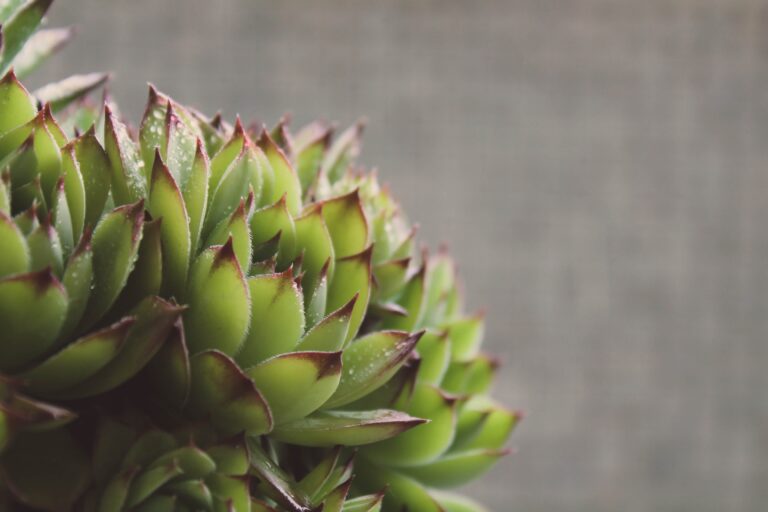
Remember, the journey from chick to hen is an adventure—one that rewards not just with flourishing greenery but also with a sense of achievement from watching your garden grow through your efforts.
Troubleshooting Common Issues: Pests and Diseases
As the guardians of our beloved Sempervivum Tectorum, it often falls upon us to stand sentinel against a microscopic onslaught. Yes, even the hardiest of houseleeks can fall victim to the depredations of pests and the ravages of diseases. In this section, let’s inaugurate a crusade to identify our antagonists and devise strategies to defend our succulent companions.
Imagine, if you will, the familiar sight of Sempervivum Tectorum – their rosettes steadfast in the face of the elements. Now picture tiny aphids, as small as they are detrimental, orchestrating a full-scale invasion. These miniscule marauders suck the vigor from our plants, leaving a telltale trail of distortion and discoloration. However, aphids aren’t invincible; introduce their natural foes, like ladybugs, to the fray, or employ a gentle soap-water mixture to bid them farewell.
Combating the Creep of Crawly Critters
What’s smaller than aphids and yet equally troublesome? The spider mite brigade, cloaked in their barely perceptible webs, they feast on the plant’s fluids. While their presence is discreet, the mottled leaves and weakened rosettes speak volumes. Moisture is the bane of their existence, so a good spray down with water can often disperse these stealthy adversaries.
Let’s not overlook the hefty snail or slug, whose slow-motion escapades in the night leave a slimy signature and notched leaves. The solution? A night-time patrol with a flashlight and gloves could transform you into the hero of the hour, plucking these ponderous pests from their banquet.
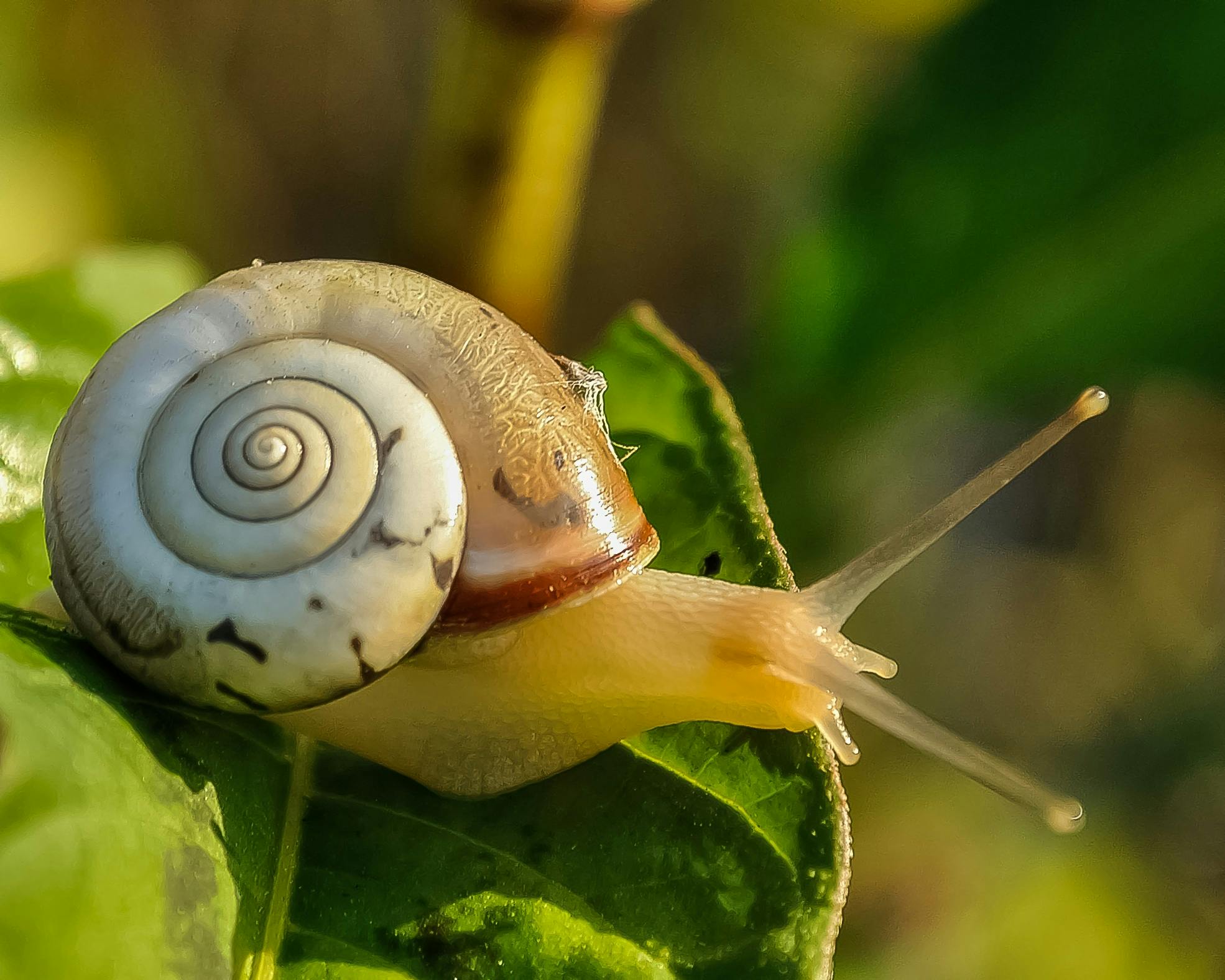
Guardians Against Ghastly Growths
Diseases can be more insidious than any bug; root rot stealthily advancing from the bottom up, ushered in by overzealous watering. Our countermeasure is clear – calibrate your watering cadence with care, ensuring the soil has time to dry between drinks. Well-draining soil may not be glamorous, but it could be the hero your Sempervivum Tectorum deserves.
We can’t forget fungal foes like powdery mildew – a ghastly specter casting a white pall over Healthy houseleeks. Fear not, for combat strategies abound: Ensure good air circulation among your rosettes or concoct a do-it-yourself potion of baking soda and water to banish the blight.
In the grand tradition of ancients, let us arm ourselves with knowledge and vigilance. Our Sempervivum Tectorum, those paragons of resilience, depend on us to peel away the veil of ignorance and safeguard their splendor. Ready your defenses, sensible succulent sentinels, and you shall prevail in preserving the enigma of your houseleeks!
Winter Care: Ensuring Year-Round Beauty
As garden enthusiasts, we relish the verdant lushness that Sempervivum Tectorum provides. But when winter whispers its frosty breath, a new challenge arises. It’s imperative we understand how to shield our beloved ‘houseleeks’ from the nippy embrace of the colder months. How, you ask? By diving into a treasure trove of winter care secrets that keep your green companion flourishing.
Snug as a Bug: Insulation Techniques
Let’s set the scene: Your Sempervivum Tectorum has basked in the summer’s glow, but winter’s chill is fast approaching. Now’s the time for action! Take a leaf out of the savvy gardener’s book and employ insulation. Just as we layer up, your succulent craves a cozy blanket. A layer of straw or frost cloth can work wonders. Remember, the goal is to replicate the plant’s natural alpine habitat – cool, dry, and well-ventilated.
Hydration Hibernation: Watering Wisdom
Watering in winter? More like a delicate dance. Sempervivum Tectorum prefers a dry winter dormancy, so overzealous watering is a definite no-go. In fact, quench its thirst sparingly, just enough to prevent desiccation. This isn’t a cactus’s desert; it’s a balancing act to keep the soil lightly moist, steering clear of ice formation at the roots – that’s a winter woe we’d all like to avoid.
The Watchful Eye: Vigilance Against Pests
Even during the winter slumber, pests can lurk and pounce. Keep a watchful eye for signs of uninvited guests like aphids and mealybugs seeking refuge in your Sempervivum’s warm rosettes. Early detection is key – and a gentle application of neem oil can be your best defense, safeguarding your succulent’s serene sleep until spring’s awakening.
Embracing winter care for your Sempervivum Tectorum isn’t just about survival; it’s about preserving the plant’s splendour and preparing it for a vibrant resurgence when the sun’s gentle warmth returns. So, delve into these practices and witness your houseleeks emerge from winter’s trial, more resilient and enchanting than ever.
The Environmental Impact of Growing Sempervivum Tectorum
Imagine your garden bustling with life, a miniature ecosystem where every plant plays a pivotal role. At the heart of this harmony lies the unassuming Sempervivum tectorum, more fondly known as the houseleek. It’s not just a plant; it’s a little green hero in the realm of sustainable gardening. So, what makes this succulent such an ecological boon? Let’s dig in.
Firstly, Sempervivum tectorum is a champion of biodiversity. Its rosette-shaped foliage offers an intricate microhabitat. When grown en masse, these succulents create a lush tapestry that serves as a haven for beneficial insects, spiders, and even small vertebrates. Each plant contributes to a thriving web of life, illustrating nature’s interconnectedness right in your backyard.
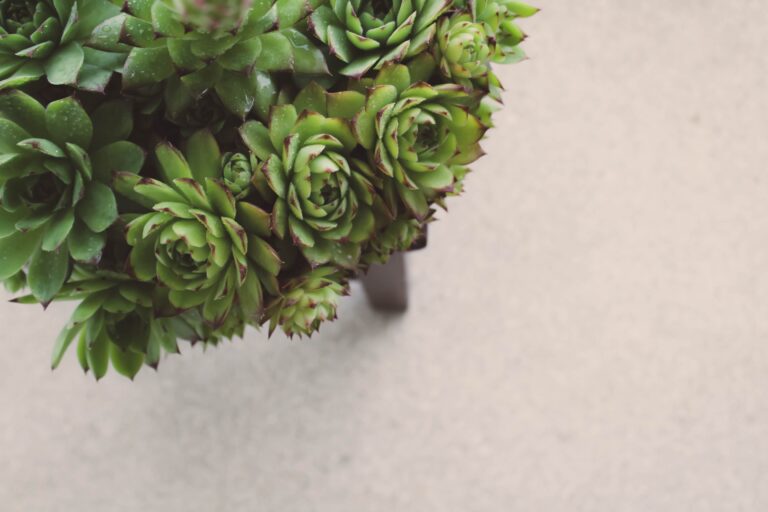
Considering the plight of pollinators, Sempervivum tectorum leaps in as a trusty sidekick. The plant blooms with starry flowers that beckon to bees, butterflies, and other pollinators—a reminder of the delicate dance between flora and fauna. By cultivating these succulents, gardeners are essentially planting pit stops for these crucial creatures, aiding their journey and ensuring the pollination of countless other plants.
Nurturing Stability, One Plant at a Time
In environments where erosion is a villain, Sempervivum tectorum emerges as a silent guardian of the soil. With roots that weave through the earth, these houseleeks form a living mesh that secures the soil, preventing erosion’s treacherous tide. On steep slopes or in rocky gardens, the steadfast grip of Sempervivum roots is indispensable. Real-life gardens on inclines have been held intact, thanks to the stabilizing strength of these succulents—a testament to their role in safeguarding our precious soil.
Through every season, Sempervivum tectorum demonstrates resilience and offers timeless lessons in ecological gardening. By growing these humble yet heroic plants, we do more than decorate our spaces. We engage in a grander scheme of environmental kindness, one rosette at a time. And while these houseleeks quietly work their magic, the world, in its subtle way, breathes a little easier.
Unveiling the Myths: Sempervivum Tectorum in Culture and Folklore
Embark on a journey through time and discover the mystique that shrouds Sempervivum tectorum, a plant as storied as it is resilient. Known commonly as Houseleeks, these plants have nestled into the annals of culture and folklore, standing as silent witnesses to centuries of human superstition and belief. What curious stories do these emerald guardians hold within their spiraled leaves?
From the windswept roof tops of medieval Europe to the craggy highlands where folkloric tales were spun, the Houseleek has been a botanical protagonist in many a curious belief. Folklore suggests that planting a Houseleek would protect against thunderstorms, possibly due to their hardy nature that resembles strength and endurance. The succulent leaves, fleshy and full of life, were thought to shield homes from lightning’s capricious wrath.
Consider the ancient Romans, who revered Houseleeks as symbols of love and prosperity. They would often plant them around their dwellings, a living charm to attract good fortune and ward off evil spirits. The robust sempervivum was more than mere decoration; it was a talisman for the home, woven into the fabric of domestic life.
Peering closer to our contemporary realm, these succulents still echo their protective lore. Gardeners and nature enthusiasts alike continue to share anecdotes of the plant’s supposed mystical properties. Whether rooted in science or superstition, the appeal of Houseleeks endures, a reminder of humanity’s ongoing dance with the natural world.
Now take a moment to gaze upon this incarnation of Sempervivum tectorum, its rosettes a mosaic of living green that has fueled imagination and folklore alike.
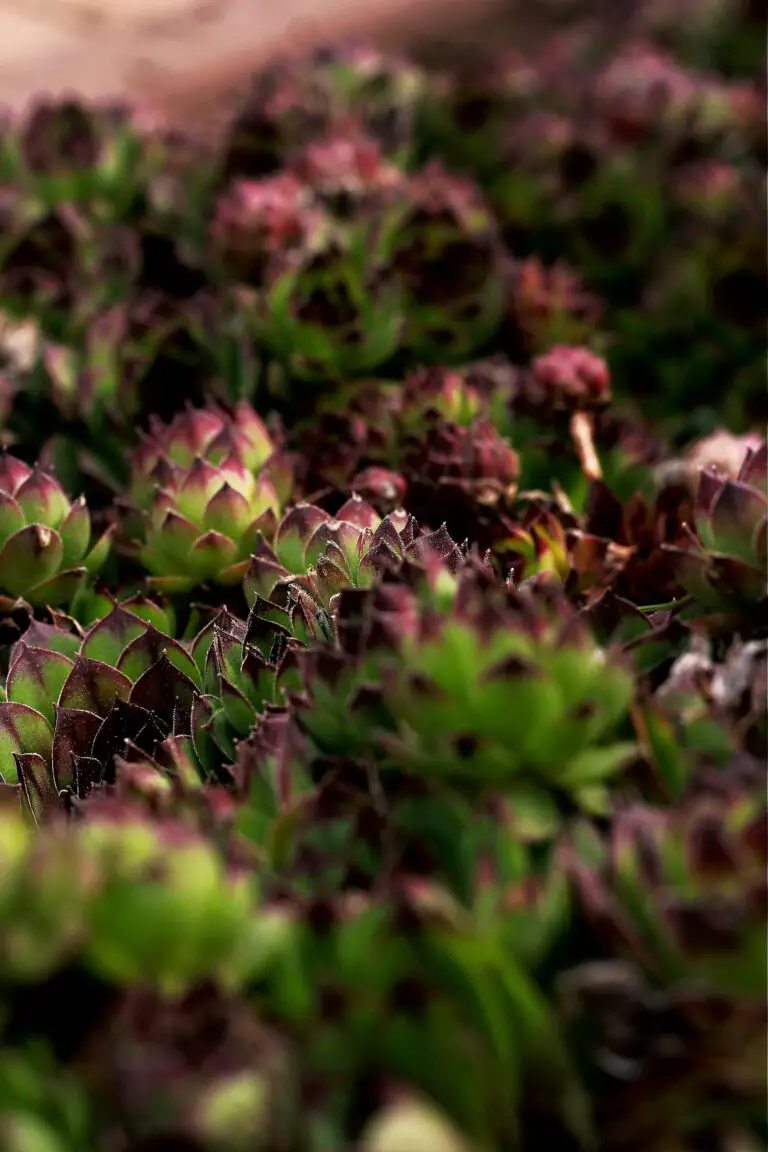
As we have unveiled the myths that enshroud the sempervivum tectorum, it’s clear that this plant is far more than just a quaint addition to rockeries and alpine gardens. Through the ages, Houseleeks have etched their impressions upon culture and folklore, blossoming into symbols that transcend mere horticultural appeal and entering the tapestry of human belief and emotion.
The Echoes of Houseleeks in Modern Symbolism
In the currents of the new age, the Sempervivum tectorum continues to thrive in our collective consciousness. Even today, these plants are popular in horticulture not just for their ease of care and drought tolerance, but for the continuity of their ancient narrative. They are living vestiges of our ancestors’ hope for protection, prosperity, and a deep-rooted connection to the earth. The Houseleek, in its quiet, enduring way, symbolizes the permanence of nature’s pact with humanity.
FAQ: Your Top Questions About Sempervivum Tectorum Answered
Ever wondered how to make your “houseleeks” thrive? Whether you’re a green thumb or new to the world of succulents, Sempervivum Tectorum, also known as the roof houseleek, holds a special place in the hearts of plant enthusiasts. Let’s dive into the most common curiosities and provide those green-fingered answers you’ve been seeking!
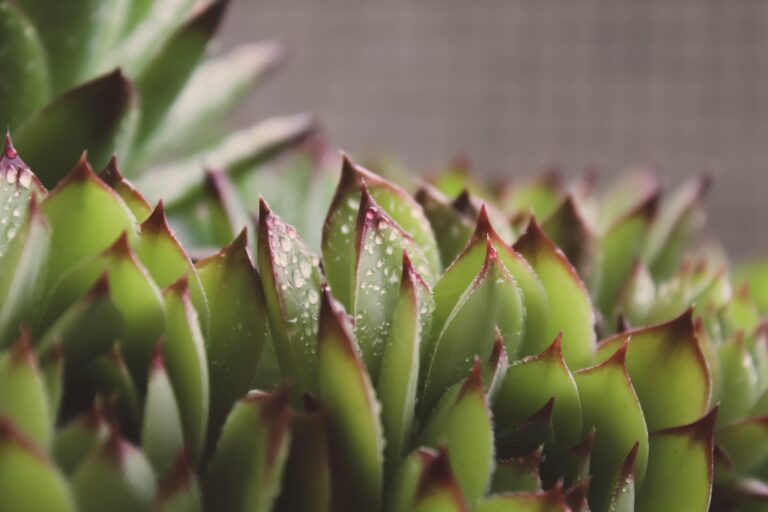
How do I ensure my Sempervivum Tectorum has the perfect home environment?
Imagine a rocky cliff face beaten by the sun’s rays; that’s the ideal spot for these hardy beauties. In your home, aim for a sunny window ledge where bright, indirect light can mimic their natural alpine habitats. And what’s the soil secret? Think gritty, porous, and well-draining – a loamy feast fit for a succulent king!
What’s the nitty-gritty on watering these drought-hardy rosettes?
Like camels of the plant world, houseleeks store water in their fleshy leaves, waiting out dry spells with ease. Wait for the soil to dry out completely before giving them a good soak, ensuring you avoid the crown to prevent rot. Think of watering as a rare, but generous, rainfall.
Propagation perplexities: How do I grow more of these succulent gems?
Ever seen a Sempervivum cluster? It’s a family affair! These plants produce offsets, or “pups,” that can be gently twisted off and replanted. It’s like getting plant babies for free! Just ensure you give them a little space to root themselves in their new home, and soon enough, they’ll be flourishing like the proud parent plant.
Solving the puzzle of yellowing leaves and other common conundrums
Yellowing leaves could signal overwatering or poor drainage, which these mountain natives despise. Scale back the water and maybe raise the planting bed. Encountering limp, droopy plants? They might be craving more sunlight! These are signs speaking the houseleek language, and learning it will lead to vibrant, velvety rosettes you’ll love.
No need for a conclusion here; your quest for Sempervivum Tectorum knowledge continues as you tend to these botanical enigmas. Embrace the role of guardian to these living sculptures and enjoy the unfolding mystery within each leaf and bloom!